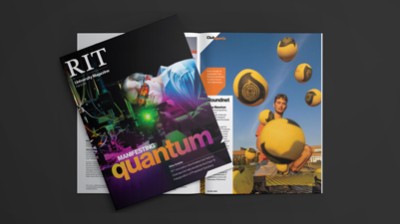Research Insights: How do you spot a fake Amazon review?
New research by Saunders professors offers a way.

How do you spot a fake Amazon review?
Amazon receives 30 million product reviews a week. And while more than 12,000 Amazon employees work to prevent abuse, the prevalence of fake reviews is arguably higher than ever as unethical sellers have a strong incentive to manipulate ratings using fraudulent positive reviews. So, how do you spot the fakes?
New research by Saunders professors offers a way. Ali Tosyali, Ph.D., and Gijs Overgoor, Ph.D., assistant professors in the department of MIS, marketing, and analytics, with others co-authored a recent study titled “Detecting Fake Review Buyers Using Network Structure: Direct Evidence from Amazon," published in Proceedings of the National Academy of Sciences (PNAS).
In their study, Professors Tosyali and Overgoor used network science and machine learning to develop a highly accurate method for detecting fake review buyers. The findings showed that products that purchase fake reviews share a common set of reviewers, often working from Facebook groups, which are highly clustered in a product-reviewer network.
How do those groups work? A potential review author will be directed to a product the buyer wants reviewed favorably. That person will purchase the product and, after waiting a couple of weeks to avoid suspicion, write a five-star review. The fake review buyer will then reimburse the reviewer, who can keep—or as is often the case, sell—the product.
The unique contribution of Tosyali and Overgoor’s study is that they directly observe which sellers buy fake reviews. Then, using machine learning they train a detection model using those reviews.
The research, which has been featured in the Wall Street Journal, offers a promising means of helping consumers avoid being duped by these fraudulent and misleading reviews.
View paper posted on Proceedings of the National Academy of Sciences (PNAS), July 11, 2022: Detecting Fake Review Buyers Using Network Structure: Direct Evidence from Amazon.













